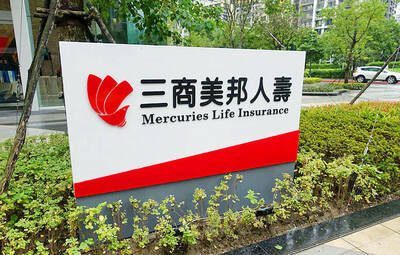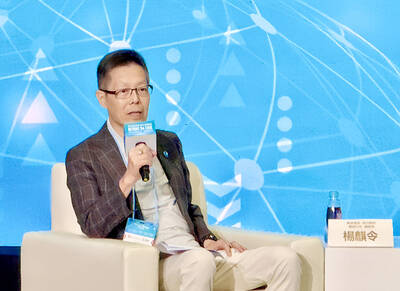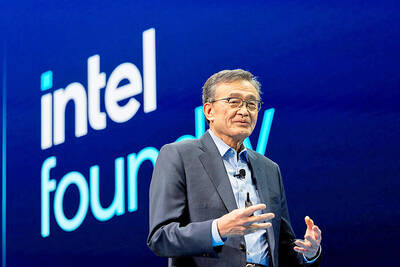Gogoro Inc (睿能創意) yesterday said 200 cities from 50 nations have applied to install mini Gogoro chargers in homes and retail stores, the latest effort by the electric scooter maker to increase sales.
Gogoro launched the Gogoro OPEN Initiative at the Consumer Electronics Show in Las Vegas last week, encouraging homeowners and businesses to install the new charger.
“We want as many people as possible to have access to the smartscooter electric vehicle revolution, so we created the Gogoro OPEN Initiative,” Gogoro cofounder and chief executive officer Horace Luke (陸學森) said.
“The Gogoro OPEN Initiative gives power to the people, broadens our addressable market and speeds our commercialization beyond our core geographic focus of megacities,” he said.
The device is about the size of a footstool.
The program is aimed at increasing the number of places where smartscooter riders can get charged batteries.
Gogoro said that the program would create a more scalable and readily available energy solution for customers outside the planned megacity rollout.
The company also provides an app for users to check their battery levels on smartphones or smartwatches.
Currently smartsctooter riders can only get recharged batteries at swap stations in Taipei, Taoyuan and Hsinchu, where the company operates stores. The electric scooter maker has built 105 swap stations and plans to add 21 at MRT stations in the capital.
Gogoro has sold about 4,000 electric scooters nationally and it plans to extend its market to Amsterdam in the summer.
The company plans to use the geographic enrollment data collected via the Gogoro OPEN portal to select new markets and deploy smartscooters in cities showing the most interest.
The company said it is to launch its first smartscooters in Europe this summer, with plans to enter the US market shortly afterward.

Mercuries Life Insurance Co (三商美邦人壽) shares surged to a seven-month high this week after local media reported that E.Sun Financial Holding Co (玉山金控) had outbid CTBC Financial Holding Co (中信金控) in the financially strained insurer’s ongoing sale process. Shares of the mid-sized life insurer climbed 5.8 percent this week to NT$6.72, extending a nearly 18 percent rally over the past month, as investors bet on the likelihood of an impending takeover. The final round of bidding closed on Thursday, marking a critical step in the 32-year-old insurer’s search for a buyer after years of struggling to meet capital adequacy requirements. Local media reports

US sports leagues rushed to get in on the multi-billion US dollar bonanza of legalized betting, but the arrest of an National Basketball Association (NBA) coach and player in two sprawling US federal investigations show the potential cost of partnering with the gambling industry. Portland Trail Blazers coach Chauncey Billups, a former Detroit Pistons star and an NBA Hall of Famer, was arrested for his alleged role in rigged illegal poker games that prosecutors say were tied to Mafia crime families. Miami Heat guard Terry Rozier was charged with manipulating his play for the benefit of bettors and former NBA player and

TECHNOLOGICAL RIVALRY: The artificial intelligence chip competition among multiple players would likely intensify over the next two years, a Quanta official said Quanta Computer Inc (廣達), which makes servers and laptops on a contract basis, yesterday said its shipments of artificial intelligence (AI) servers powered by Nvidia Corp’s GB300 chips have increased steadily since last month, should surpass those of the GB200 models this quarter. The production of GB300 servers has gone much more smoothly than that of the GB200, with shipments projected to increase sharply next month, Quanta executive vice president Mike Yang (楊麒令) said on the sidelines of a technology forum in Taipei. While orders for GB200 servers gradually decrease, the production transition between the two server models has been

BETTER THAN EXPECTED: The firm’s Q3 results exceeded its projections, based on ‘the underlying strength of our core markets,’ chief financial officer Dave Zinsner said Intel Corp returned to profitability and gave an upbeat revenue forecast after PC demand grew, suggesting that it is making progress on a long and challenging comeback attempt. In the third quarter, revenue rose 3 percent to US$13.7 billion. The Santa Clara, California-based company posted its first quarterly net income since the end of 2023, with earnings per share of US$0.23, excluding some items. Analysts had estimated sales of US$13.2 billion and earnings per share of US$0.01 on average, according to data compiled by Bloomberg. Fourth-quarter sales would be roughly US$13.3 billion, the company said in a statement on Thursday. Intel shares gained about